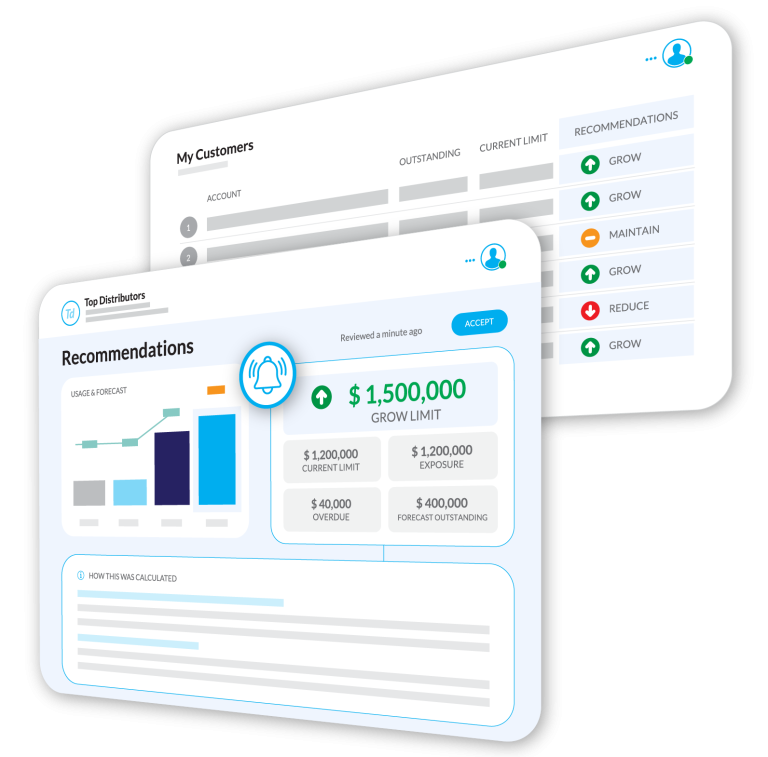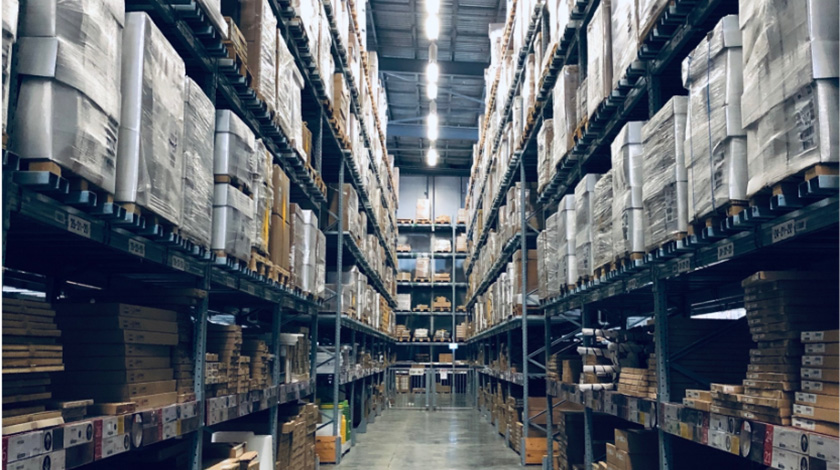Background
For decades, Business Information Reports (BIRs) have been the trusted go-to source for businesses seeking insights into their prospective and existing customers. These reports, generated by credit bureaus, have traditionally been instrumental in helping organizations make informed credit decisions. However, it’s essential to explore innovative solutions that empower businesses with enhanced tools, introduce efficiencies and contribute to revenue growth.
In this article, we embark on an insightful journey to understand the world of BIRs, their advantages, limitations, and most importantly, the evolution represented by Trade Shield’s cutting-edge solution poised to redefine credit risk management. Our aim is to provide you with valuable knowledge to help you make informed choices for your business’s financial well-being. Let’s dive in.
What are Business Information Reports?
Business Information Reports (BIRs) are created by credit bureaus at the request of businesses granting credit. BIRs provide the most up-to-date information available and have been the primary tool for credit risk assessments for over one hundred years. Key external data points are used as inputs into the risk assessment process and decision-making.
These are some typical categories and providers of BIRs.
Global Business Focused:
- Dun & Bradstreet
- Credit Safe
- Bureau van Dijk (Moody’s)
Global Consumer Focused:
- Experian
- TransUnion
- Equifax
Regional / Niche Focus
- NACM
- Inoxico
- Truckstop
- BCM/Debtsource
So, which businesses should be using BIRs? Businesses have different requirements and resources, and the following can rely on BIRs:
- Businesses that onboard less than 10 new customers per month
- Businesses that review less than 20 credit limits per month
- Businesses where turnaround times are not sales critical
- Businesses where credit losses are not a key risk
- Businesses where reports are needed for compliance
- Businesses where experienced credit analysts are readily available and inexpensive
The Pros & Cons of Business Information Reports
When it comes to credit risk assessment, Business Information Reports have long served as a vital tool for businesses. They provide some valuable data to inform credit decisions. However, like any tool, BIRs have their own set of advantages and disadvantages. In this section, we’ll delve into the key pros and cons of relying on BIRs for your credit assessments.
Advantages | Disadvantages |
|---|---|
Some business identification, financial and trade information for smaller credit grantors | Once-off credit reports become out-of-date quickly |
Basic risk scores | Manual review of information and subjective decision-making by the credit analyst
|
Generic credit limits | Real-time changes in accounts’ risk profiles could go undetected |
Limited Trade Accounts Receivable and economic information
| |
No predictive modelling or forecasting of purchase behaviour
| |
No customization of credit limits or credit policy as part of decisioning
| |
No optimisation in terms of model updates or customer segment strategies |
After exploring the pros and cons of BIRs, it’s evident that credit assessment tools have come a long way, but there’s room for innovation. Trade Shield offers an intelligent AI-driven approach to credit success.
About Trade Shield
Trade Shield has years of experience helping credit professionals at leading multinational brands with monitoring and payment behaviour forecasting. Our solution ensures control of decisioning from application to limit reviews balancing profitability with credit risk through always-on credit account analysis and recommendations.
Trade Shield is empowering credit teams at leading global brands such as Avis, Heineken, Bridgestone, DHL and NTT. We’ve seen some incredible results, including a 58% increase in purchase volumes, an 85% increase in active buyers and a 75% reduction in approval time!
Trade Shield uses Business Information Reports as an input, supplementing these with additional critical data, modelling, decisioning and monitoring capabilities. This enables credit teams to focus on monitoring and strategic optimization rather than manual work, ensuring consistency and profitable decisioning.
Your business will benefit from Trade Shield if:
- You sell a physical product
- You sell to 500 or more business customers per month
- You sell on credit terms
- Turnaround times are important for sales
- Credit losses and costs affect your profitability

How Trade Shield can help you
Trade Shield supports credit analysts with a comprehensive and dynamic solution to credit risk management. Here are a few ways Trade Shield improves decision-making.
Information sourcing
Trade Shield sources data from industry-leading sources for identification, classification, financial analysis, trade, accounts receivables and economic data. This includes preferred Business Information Reports (BIRs).
Modelling
Trade Shield offers powerful predictive models that deliver payment, default & purchase forecasts, empowering the business to anticipate risks and behaviour.
Decisioning
Rather than a generic credit limit, Trade Shield offers a decisioning framework of customised credit limits and policy rules, ensuring the right limit is set according to business needs and predictive insights.
Monitoring
Trade Shield’s continuous monitoring of every account identifies opportunities & risks, notifying key team members of important changes that require actions.
Optimisation
Trade Shield’s modelling and decisioning frameworks are retrained with new data and parameters are adjusted to improve the profitability of credit strategies.
A Scenario: The Credit Review Journey
In the scenario that follows, we’ll compare a traditional credit review to Trade Shield’s digital decisioning platform for the same credit review process.
Advantages | Disadvantages | |
|---|---|---|
Some business identification, financial and trade information for smaller credit grantors | Once-off credit reports become out-of-date quickly | |
Basic risk scores | Manual review of information and subjective decision-making by the credit analyst
| |
Generic credit limits | Real-time changes in accounts’ risk profiles could go undetected | |
Limited Trade Accounts Receivable and economic information
| ||
No predictive modelling or forecasting of purchase behaviour
| ||
No customization of credit limits or credit policy as part of decisioning
| ||
No optimisation in terms of model updates or customer segment strategies | ||
*offered by many third parties, integrated into Trade Shield
Some of the disadvantages of having an analyst manually run this process with BIRs are:
- External data is limited and often out-of-date
- There’s significant manual effort needed to combine all data sources
- Analysts’ decisions can be inconsistent
- Analysts’ decisions can be unprofitable
- The challenge gets greater when multiple analysts are covering large, complex customer sets
- There are usually no strategies for the improvement of decision-making
Making the shift to Trade Shield is easy
Shifting from Business Information Reports to Trade Shield’s end-to-end digital platform is easy because credit teams can use some or all of the modules and grow as their needs change.
Trade Shield’s team of experts will support you through the following steps.
Credit Review Step | Using Business Information reports | Using Trade Shield |
|---|---|---|
1. Data collection through a credit application | Analyst receives a PDF document | Digital workflow * |
2. Collect additional input data from external sources | Analyst manually requests Business Information Report | Real-time BIR request through an API |
3. Collect data from internal sources | Analyst reviews trading history | Automated inclusion of payment behaviour |
4. Combine all data into a single view | Analyst remembers all the data | Automatic consolidation into Customer 360 |
5. Assess the payment and default risks | Analyst does gut-feel assessment | Predictive modelling of expected credit losses |
6. Decision on the amount of credit to extend | Analyst applies “rule-of-thumb” or historical approach | Expert Decisioning Framework recommends credit based upon live data inputs
|
7. Documentation of the decision | Often not done | All data and audit trail saved |
8. Monitor and optimize performance | Often not done | Always-on, automated monitoring ensures optimisation for profitability |
Let us show you
Don’t just take our word for it. We’d love to show you how Trade Shield will transform your trade credit process.
Take the next step
The journey from paper-based systems to a dynamic digital platform is transformative, easily highlighting the inefficiencies of manual processes and the compelling advantages of digitisation. If you’re a finance or credit professional with growth targets in any of the above benefit areas, we’d love to chat about how to streamline your operations and propel your business towards a more agile and data-driven future.
Book a no-obligation demo here, or contact us here. One of our friendly credit experts will be in touch.



